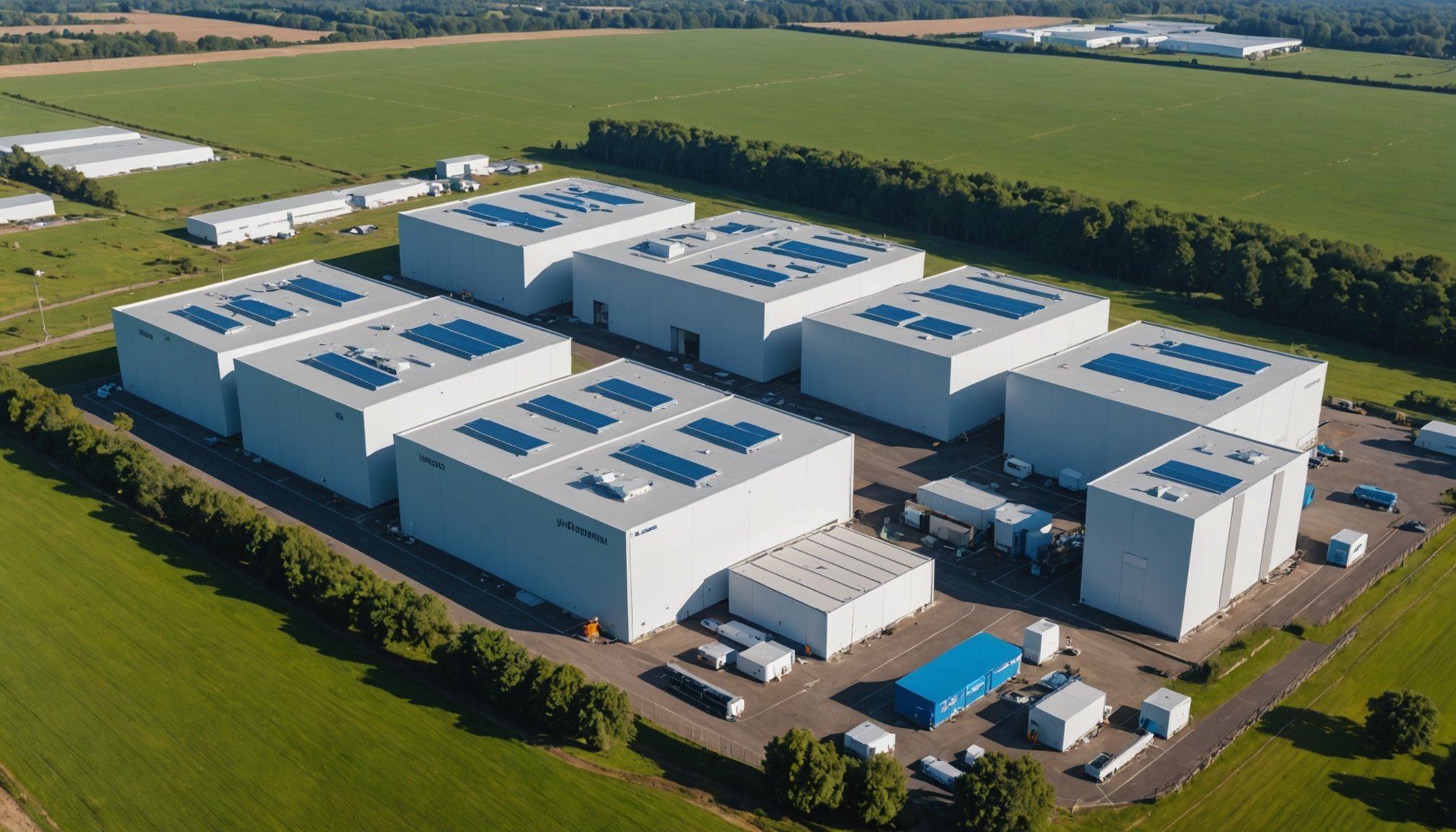Hydrogen’s immense energy potential faces a persistent hurdle: safe, efficient storage. Innovations in compressed gas, cryogenic liquid, and material-based methods strive to balance energy density with practical vehicle dimensions. Exploring these evolving solutions reveals how science and engineering work hand in hand to unlock hydrogen’s promise, advancing safer, more accessible storage for the future of clean energy.
Safe and Efficient Hydrogen Storage Solutions: Meeting Industrial, Energy, and Transportation Needs
To address the broad requirements for secure and scalable hydrogen storage, industry and researchers face multiple engineering and safety challenges. After applying the Stanford Question Answering Dataset (SQuAD) method, the core answers highlight that hydrogen’s low volumetric energy density and high flammability necessitate innovative storage systems—especially for mobility, grid, and industrial uses. For instance, compressed hydrogen remains a preferred choice for fuel cell vehicles, while large-scale infrastructure leans toward underground and modular high-pressure systems for both reliability and minimized footprint. An important reference for professionals is the detailed industry and safety discussion that uncover the effectiveness of hydrogen storage solutions in vallourec offerings, particularly in the context of new projects meeting today’s performance and validation targets.
In the same genre : How Can UK’s Business Innovations Shape the Global Market?
Several primary storage approaches exist:
- Compressed gas storage uses robust composite tanks at pressures up to 700 bar, found in automotive and refueling contexts.
- Liquid hydrogen tanks achieve high energy density but require -253°C temperatures, demanding advanced insulation and safety engineering for applications like aerospace.
- Solid-state and materials-based methods—such as metal hydrides—offer compactness, low loss, and unique safety benefits for specialized backup and renewable integration.
Safety remains paramount; containers must resist embrittlement, integrate advanced leak detection, and be certified to evolving international standards. The strategic direction of current research and market adoption emphasizes modularity, compactness, and operational efficiency, demonstrating that rigorous validation is unlocking hydrogen’s potential across sectors.
Have you seen this : Is the UK Business Environment Conducive to Startups Today?
Core Hydrogen Storage Technologies and Their Performance
Compressed Gas Solutions: 350–700 Bar Tanks and Safety Considerations
Compressed hydrogen storage leverages high-pressure hydrogen tanks to maximize storage density for fuel cell vehicles. Most modern automotive hydrogen storage system designs use composite containers rated to 350 or 700 bar. These systems feature advanced materials for hydrogen storage efficiency improvements and must meet hydrogen storage safety standards, such as strong leak resistance and robust hydrogen diffusion barrier technologies. Safe hydrogen containment systems for automotive hydrogen storage technologies also emphasize hydrogen storage pressure vessel materials resistant to embrittlement, ensuring longevity and reliable containment throughout the hydrogen storage lifecycle analysis.
Liquid Hydrogen Storage: Cryogenics, Technical Challenges, and Applications
Liquid hydrogen storage methods require maintaining cryogenic hydrogen tanks at -253°C. While achieving high volumetric density, these systems present technical hurdles for hydrogen storage temperature control and energy loss from continual evaporative boil-off. Cryogenic hydrogen tanks serve aerospace and some industrial applications where high energy density is prioritized. Liquid hydrogen handling safety mandates rigorous procedures, as low temperatures and pressure changes present operational hazards within hydrogen storage for backup power and hydrogen storage for grid-scale solutions.
Materials-Based Storage: Metal Hydrides, Sorbents, and Innovative Compounds
Solid-state hydrogen storage technologies center around metal hydrides for hydrogen storage and hydrogen storage in carbon materials. These compounds chemically absorb hydrogen, delivering reversible hydrogen storage methods suitable for off-grid power supply with hydrogen and compact hydrogen storage units. Hydrogen storage materials innovation, including solid sorbents for hydrogen storage, continues to drive hydrogen storage efficiency improvements and lower hydrogen storage system maintenance burdens.
Overview of Advanced Methods: Geological Caverns, Carbon Materials, and Nanomaterials Integration
Emerging hydrogen storage methods include the use of underground salt caverns and integration of hydrogen storage in nanomaterials for scalable hydrogen storage solutions. Geological storage leverages established hydrogen supply chain and storage practices, while hydrogen storage based on sorbent materials and hybrid hydrogen storage systems open opportunities for hydrogen storage for renewable energy integration and energy storage using hydrogen fuels. These flexible, hydrogen storage modular systems help address compactness, hydrogen storage cost reduction strategies, and adaptability across hydrogen storage for industrial applications.
Safety Standards, Monitoring, and Risk Management in Hydrogen Storage
Regulatory Milestones and Evolving Global Safety Guidelines
Hydrogen storage safety standards are strictly defined to minimize hazards such as leaks, pressure failures, and environmental risks. Regulatory authorities establish safe hydrogen containment systems to ensure vessel integrity for both compressed gas storage safety and liquid hydrogen handling safety. New regulations often address best practices for hydrogen storage risk assessment and mandate hydrogen storage monitoring technologies capable of delivering real-time data. To meet these evolving benchmarks, hydrogen storage vessel fabrication now often incorporates hydrogen diffusion barrier technologies and higher-grade materials.
International hydrogen storage regulations and policies are increasingly aligned, focusing on compliance with recognized guidelines and rapid incident reporting. This widespread alignment enables safe large-scale storage and simplifies permitting for hydrogen storage system deployment.
Leak Detection, Embrittlement Resistance, and Pressure Testing Innovations
Leak detection systems are critical in hydrogen storage monitoring technologies, using advanced sensors for rapid issue identification. Embrittlement resistance is essential for safe hydrogen containment systems, particularly because hydrogen can weaken metals over time. Rigorous pressure testing ensures both compressed gas storage safety and liquid hydrogen handling safety, lowering the risk of catastrophic vessel failure through scheduled inspection cycles.
Digital Monitoring, Permitting, and Real-Time Asset Management
Digital solutions support hydrogen storage vessel fabrication and hydrogen storage handling procedures by enabling integrated risk management across assets. Digital permitting platforms support adherence to hydrogen storage safety standards, while continuous data streams from hydrogen storage monitoring technologies improve predictive maintenance. These innovations empower operators to manage hydrogen storage risk assessment, enhancing operational reliability and public safety.
Commercial Solutions, Market Applications, and Future Innovation in Hydrogen Storage
Case Studies: Metal Hydride Containers, Vallourec Delphy Solution, and Ammonia Integration
Hydrogen storage for fuel cell vehicles, industry, and grid balancing has advanced with scalable hydrogen storage solutions such as metal hydride containers and the Vallourec Delphy hydrogen storage system. These compact hydrogen storage units enable energy storage using hydrogen fuels with high efficiency and safety, thanks to integrated thermal management systems and robust containment engineering. Ammonia integration serves energy storage using hydrogen fuels by converting hydrogen to ammonia for shipping and back to hydrogen upon use, supporting hydrogen storage for industrial applications and grid-scale demands.
Applications: Automotive, Grid-Scale, Backup, Synthetic Fuels, and Smart Buildings
Automotive hydrogen storage technologies rely on high-pressure composite tanks or compact hydrogen storage units to achieve viable driving ranges. For backup power, smart buildings, and off-grid power supply with hydrogen, metal hydrides and hybrid hydrogen storage systems offer reliable, loss-free storage and fast refueling capabilities. Grid-balancing and synthetic fuels production use hydrogen storage for renewable energy integration, employing modular, scalable hydrogen storage solutions that adapt to facility size and energy requirements.
Innovation Pathways: Materials Research, Modular Design, and Cost Reduction for Widespread Adoption
Ongoing advanced hydrogen storage research focuses on improving hydrogen storage lifecycle analysis, optimizing hydrogen storage for fuel cell vehicles, and enhancing hydrogen storage cost reduction strategies. Innovation targets safer, more compact hydrogen storage units, higher hydrogen storage capacity, and seamless integration with renewable power sources. New developments in hydrogen storage materials and modular hybrid hydrogen storage systems will facilitate broader deployment across energy, transportation, and industrial sectors for 2025 and beyond.


